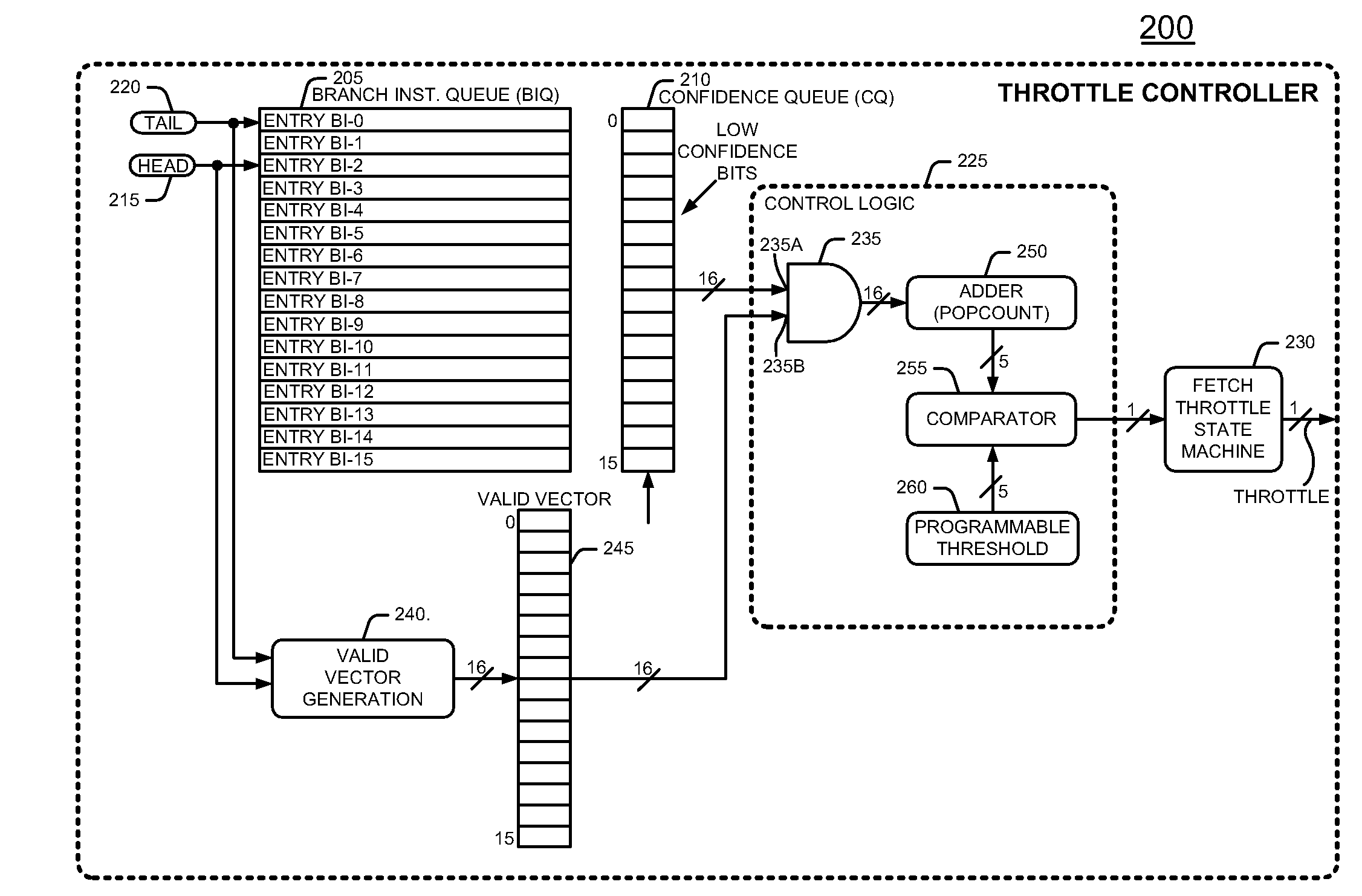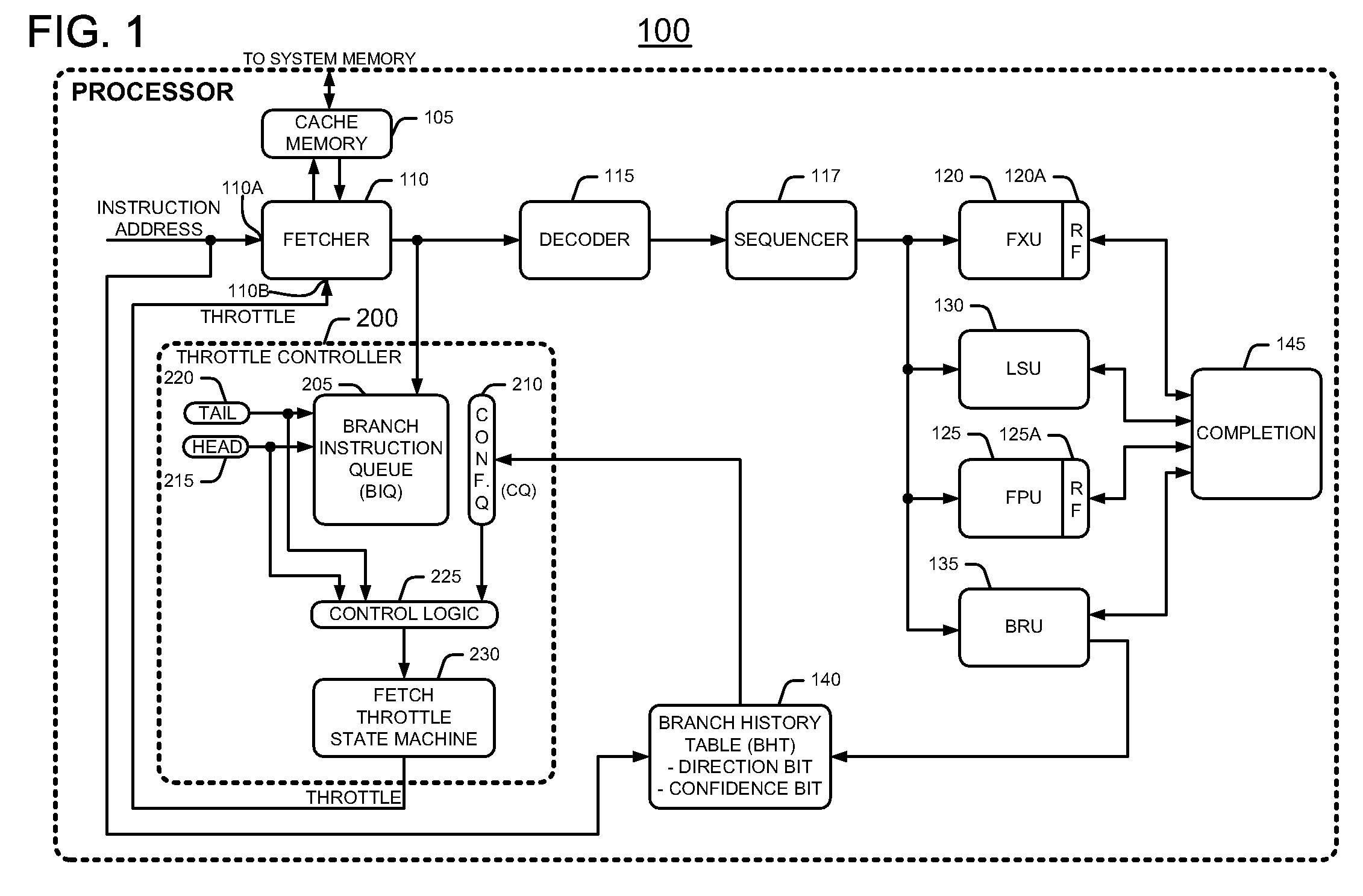Method and apparatus for conserving power by throttling instruction fetching when a processor encounters low confidence branches in an information handling system
a technology of information processing system and instruction fetching, which is applied in the field of processors, can solve the problems of generating a substantial amount of heat and significant contributing factors to the maximum operating frequency of modern processors, and achieve the effects of reducing power consumption by the processor
- Summary
- Abstract
- Description
- Claims
- Application Information
AI Technical Summary
Benefits of technology
Problems solved by technology
Method used
Image
Examples
Embodiment Construction
[0014]Many contemporary processors employ speculative execution techniques that use branch prediction to increase processing efficiency. An instruction fetcher in the processor fetches a stream of instructions that contains branch instructions. The processor may speculatively execute instructions after a branch instruction in response to a branch prediction. In more detail, after an instruction decoder decodes a fetched branch instruction of the instruction stream, a branch prediction circuit makes a prediction whether or not to take the branch that the branch instruction offers. The branch is either “taken” or “not taken”. The branch prediction circuit predicts whether or not to take the branch by using branch history information, namely the branch results when the processor encountered this particular branch instruction in the past. If the branch prediction circuit predicts the branch correctly, then the processor keeps the results of instructions after the branch. However, if the...
PUM
 Login to View More
Login to View More Abstract
Description
Claims
Application Information
 Login to View More
Login to View More - R&D
- Intellectual Property
- Life Sciences
- Materials
- Tech Scout
- Unparalleled Data Quality
- Higher Quality Content
- 60% Fewer Hallucinations
Browse by: Latest US Patents, China's latest patents, Technical Efficacy Thesaurus, Application Domain, Technology Topic, Popular Technical Reports.
© 2025 PatSnap. All rights reserved.Legal|Privacy policy|Modern Slavery Act Transparency Statement|Sitemap|About US| Contact US: help@patsnap.com



